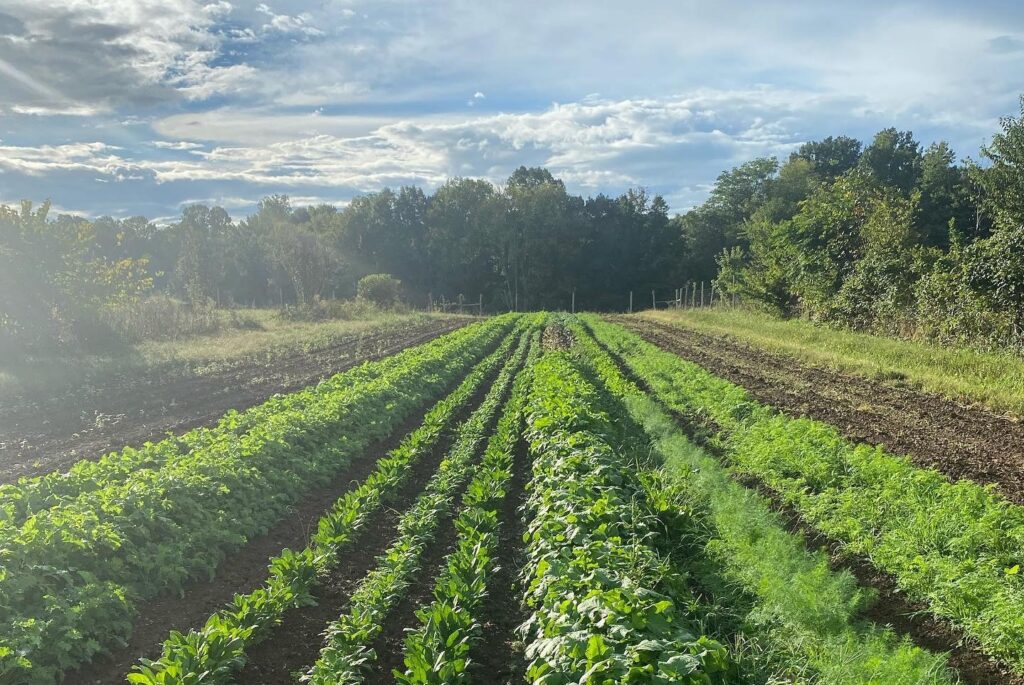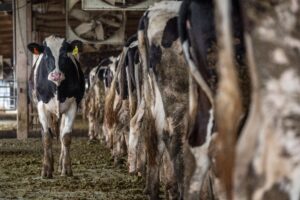
Eating plants is far better for the planet than eating animal products, and a new study shows just how much.
Vegan diets account for 75% less planet-heating emissions, land use and water pollution than a diet that includes 3.5 ounces of meat each day. Vegan diets also result in 54% less water use and 66% less biodiversity loss, according to a new study published in Nature Food.
“It’s an important piece of work,” said Diego Rose, a nutrition researcher at Tulane University who was not involved in the study.
The conclusion is well established, despite efforts from the meat industry to convince people otherwise, but the study offers the most comprehensive analysis on the topic to date.
‘We, all of us, need to change’
To factor in the variation of where and how food is produced, and avoid the pitfalls of cherry-picking studies, scientists at the University of Oxford looked at the actual diets of 55,000 people, as opposed to models, and data from 38,000 farms in more than 100 countries.
“Even accounting for changes in practices around the world, it’s still the case that eating less meat is better for the planet,” Rose said.
Rose published a study this year comparing six types of diets: omnivore, vegetarian, pescatarian, vegan, keto-style and paleo-style. Despite using different data and methods, the results were virtually the same — vegan diets had 40% less greenhouse gas emissions than vegetarian diets, 60% less than pescatarian, 70% less emissions than omnivore diets and even less compared to the increasingly popular keto- and paleo-style diets.
Rose emphasized that his takeaway is also the same: While there are ways to reduce food waste and improve current food systems, people, especially in high-income countries, must eat less meat.
“We, all of us, need to change our diets to be able to meet our climate objectives,” Rose said.
Animal agriculture causes as much as 20% of global climate change
Food systems account for about a third of all planet-warming emissions and 70% of freshwater use, and meat represents a huge chunk of that environmental impact.
 Courtesy Jo-Anne McArthur/Unsplash
Courtesy Jo-Anne McArthur/Unsplash Vegan diets use 54% less water, on average, than diets with 3.5 ounces of meat a day.
Using animals as a food source could cause as much as a fifth of global climate pollution. The UN Food and Agriculture Organization estimates that animal agriculture accounts for about 11% of global greenhouse gases, but peer-reviewed research tends to put the figure between 15% and 20%.
Measuring animal emissions is hard because the entire biological organism and system have to be modeled, and sometimes models underestimate emissions compared to real-world measurements.
In the U.S., there are additional political challenges. Congress has blocked the Environmental Protection Agency from tracking greenhouse gas emissions from animal agriculture by adding technical amendments to its annual budget. Last year, senators from Iowa and North Dakota introduced a bill to completely ban EPA from monitoring methane emissions directly from animals used for food.
EPA relies on models, and some independent measurements of animal methane emissions have been between 40% and 90% higher than EPA projections, according to a 2021 study from Johns Hopkins University and New York University.
Animal agriculture groups lobby against climate action
Food lobbies have a lot of influence over what people eat.
“Today in America, food arguably divides people more than it unites them, thanks in part to decades of manufactured controversy, done for political gain and corporate profit,” wrote Brent Cunningham, the director of the Food and Environment Reporting Network, last year.
In the U.S., it is easy to point to the Dietary Guidelines for Americans, a federal product that is shaped by “Big Food” lobbies that represent corporate interests and — often — the meat, dairy and sugar industries.
In some ways, the animal agriculture industry mirrors the fossil fuel industry. Companies are slow to make emissions cuts, lobby against climate action and attack alternatives — the dairy industry has been trying for years to outlaw the word “milk” from plant drinks, and the animal industry has made similar attempts with plant-based meat. The meat industry has even tried to push the idea that meat is a climate solution.
“There’s pushback from folks in the food industry who don’t want to sell less of their products,” Rose said.
Tennessee farms are largely focused on meat
In Tennessee, farming is largely about meat. About 40% of land is used for farming, and animal agriculture represents a large chunk of business. In 2021, corn and soybeans, usually used for animal feed, processed food and ethanol, were the most profitable agricultural commodities, followed by chicken and cows. Cows alone translated to more than $580 million in profits that year.
Land used to grow fruits and vegetables for direct human consumption, however, represents a fraction of a percent of farmland in Tennessee, based on 2017 U.S. Department of Agriculture census data.
The culture of heavy meat and processed food consumption has significant health consequences.
In 2019, only about 10% of Tennessee adults are eating the recommended fruit and vegetable amounts each day, according to the Centers for Disease Control and Prevention, and Tennessee now has the sixth-highest rate of heart disease in the nation.
There are ways to simultaneously eat healthier and more sustainably. As more people shift their dietary choices, Tennessee’s landscape could change — and the planet might just get healthier, too.

